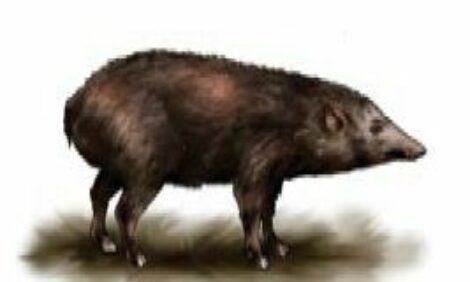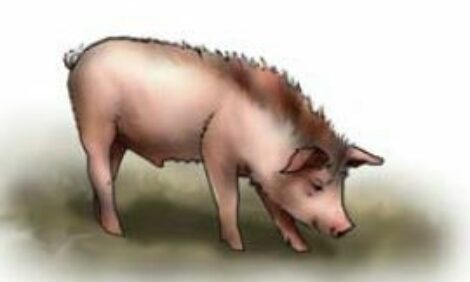



Fengjing
The Fengjing pig is a domestic breed from Shanghai, China, named after the Shanghai town of Fengjing. Its main locations are in the districts of Jinshan, Songjiang, and Wujiang, which are all located in the narrow region of sub-tropical climate around the Taihu Lake region. The Fengjing is a large black pig with large floppy ears, distinguished by its distinctive highly wrinkled face and body. The Fengjing is highly resistant to disease, and can be fed mainly on roughage and farm waste, making it a very good breed for low-intensity farming. They grow relatively slowly, but are reputed to have an excellent, succulent taste.
The Fengjing is among the most fertile of all pig breeds as they have uncommonly high embryo survival rates, and large litter sizes. Fengjings reach puberty at 2 to 3 months of age, commonly having two litters per year. From their third litters onwards the litter average is 17 piglets, with an average of 12 reaching weaning age. Their average daily gain is 0.75 lbs and weight at 240 days weigh 170lbs (77kg).
Fengjing pigs were brought into the US in 1989 under a United States Department of Agriculture scheme with the University of Illinois and Iowa State University. Meishan and Minzhu were also introduced with this program at the same time. A total of 144 pigs of these breeds were brought to the U.S. with this program. Iowa State University received 8 Fengjing males for research on July 27, 1989. This was done so that the Fengjing could be crossed with Western breeds, it is hoped that the crossbred offspring will have improved taste when slaughtered, and an increased resistance to disease. It is also hoped that the Fengjing will pass on its high litter numbers to its hybrid offspring.






